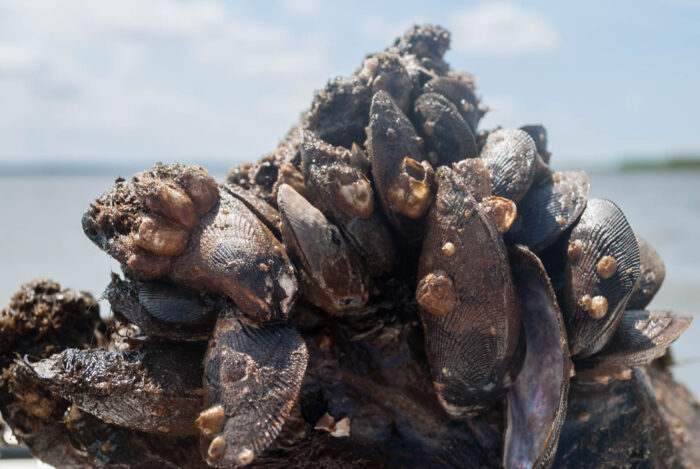Hooked mussel
Ischadium recurvum
The hooked mussel is a bivalve whose dark, ridged shell is strongly curved, or “hooked” on one end. It is prolific in oyster reefs—often “wrapping up” oysters—and can outnumber the amount of oysters by several fold.

